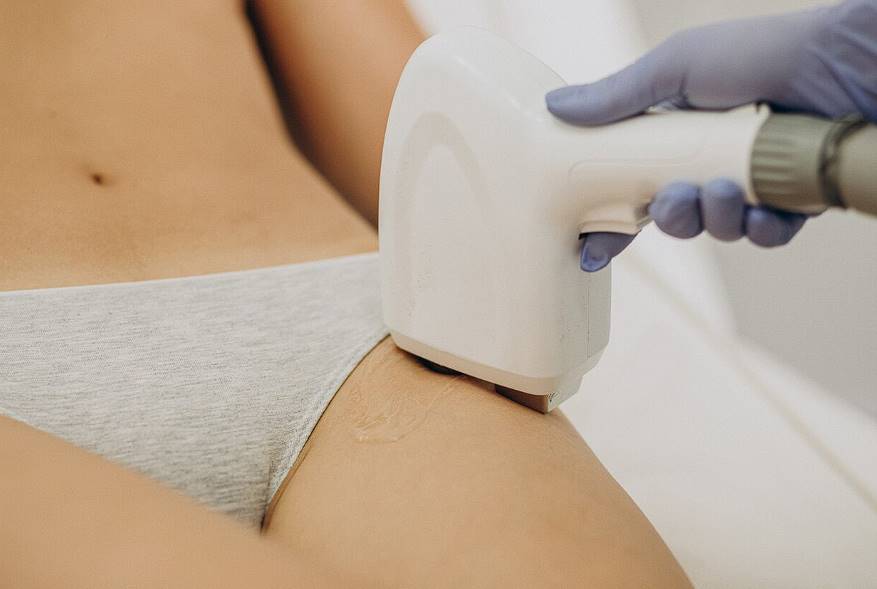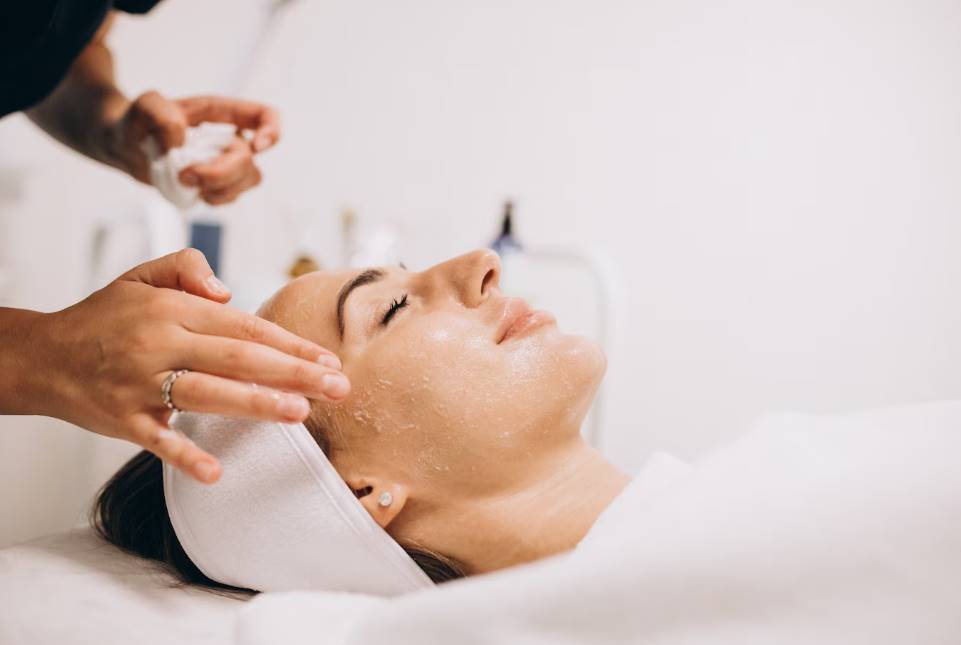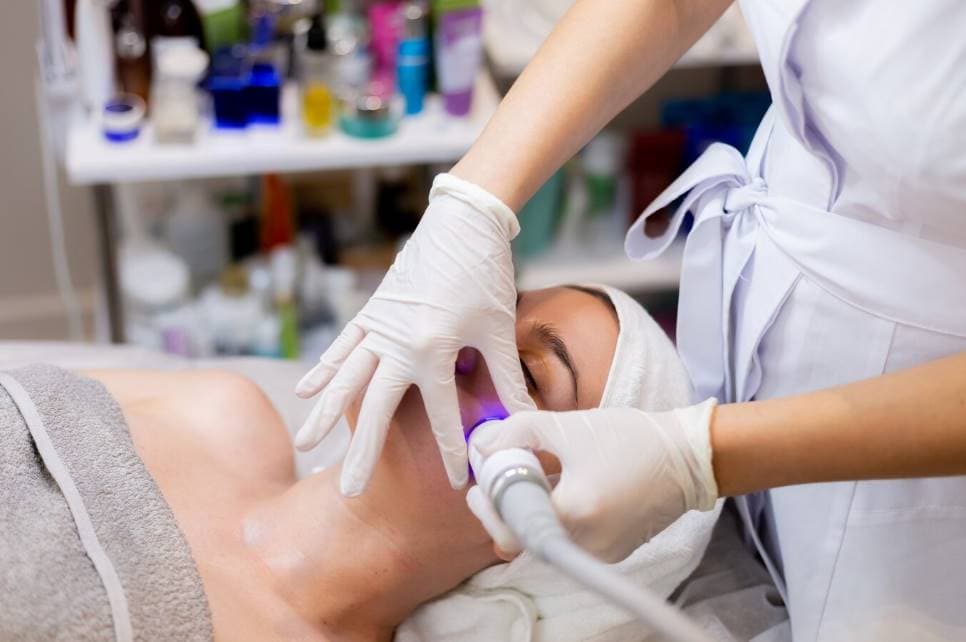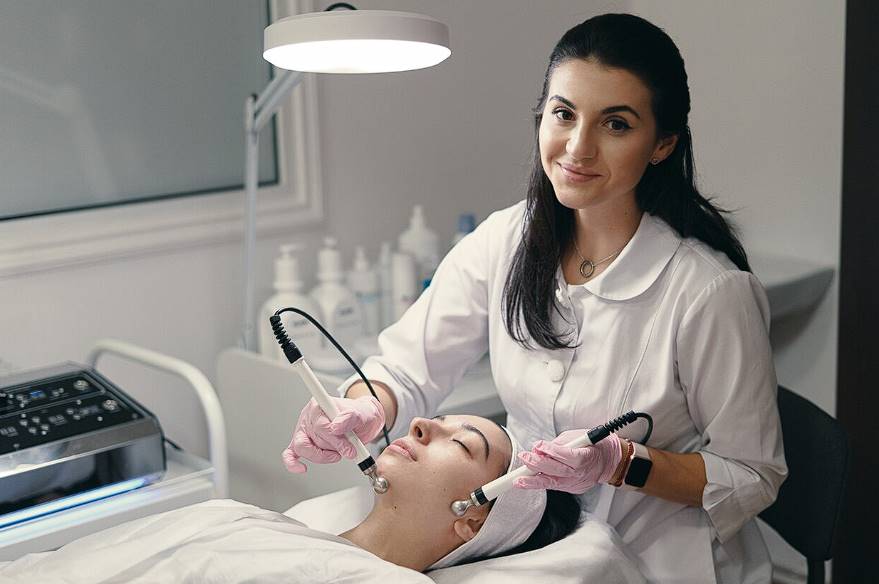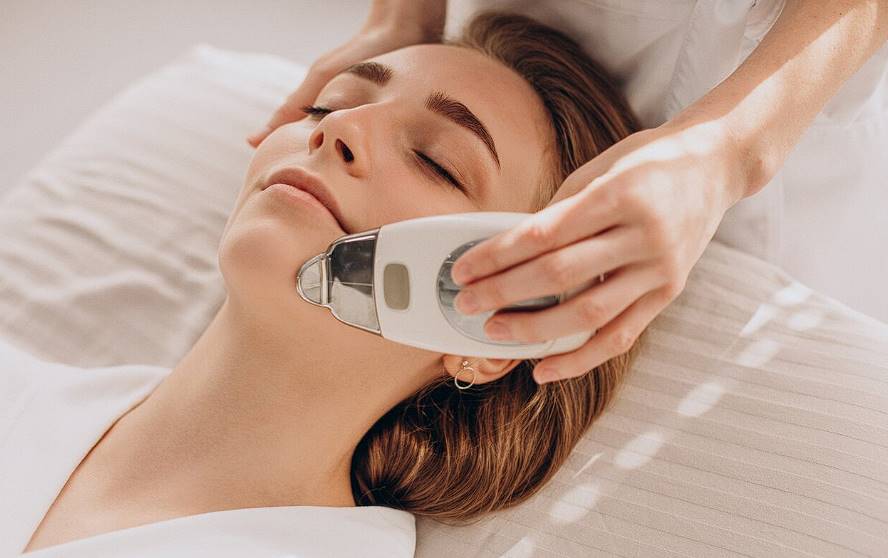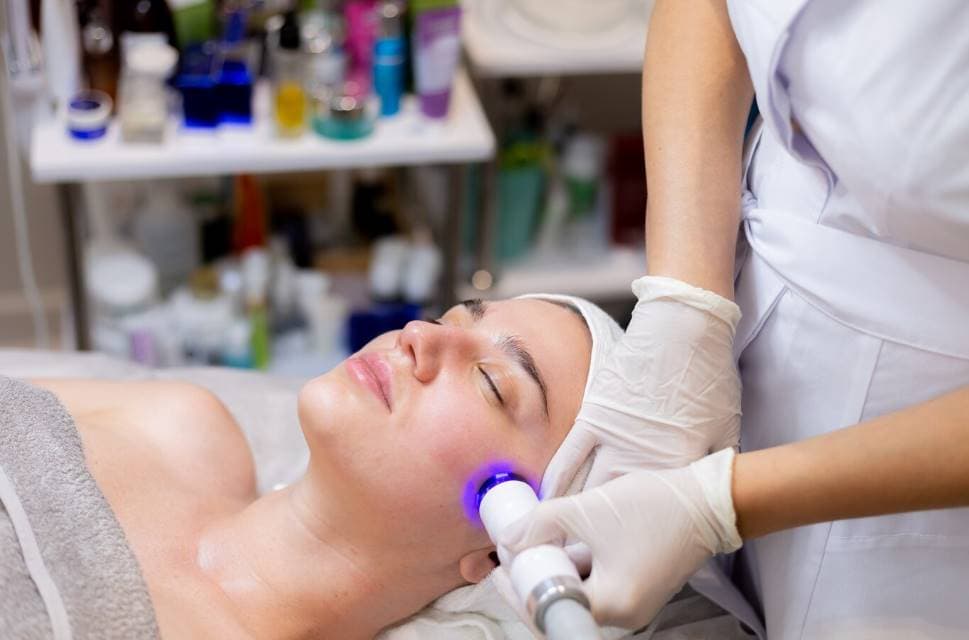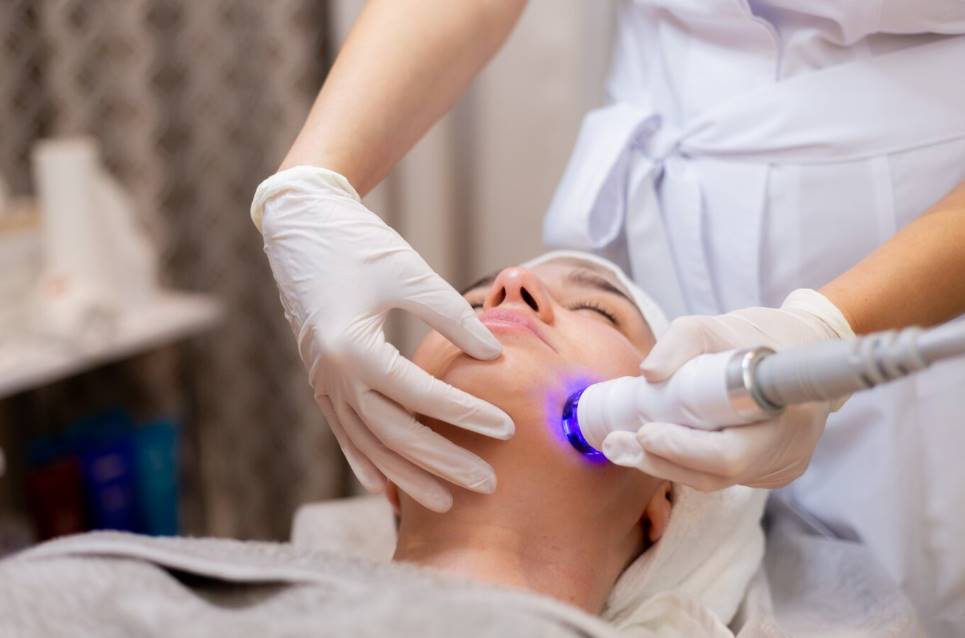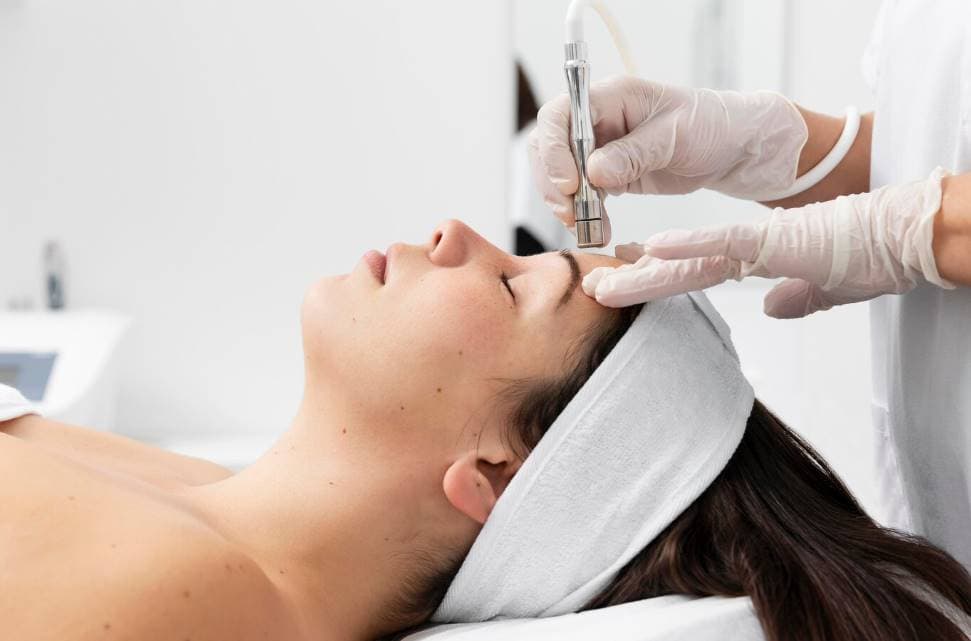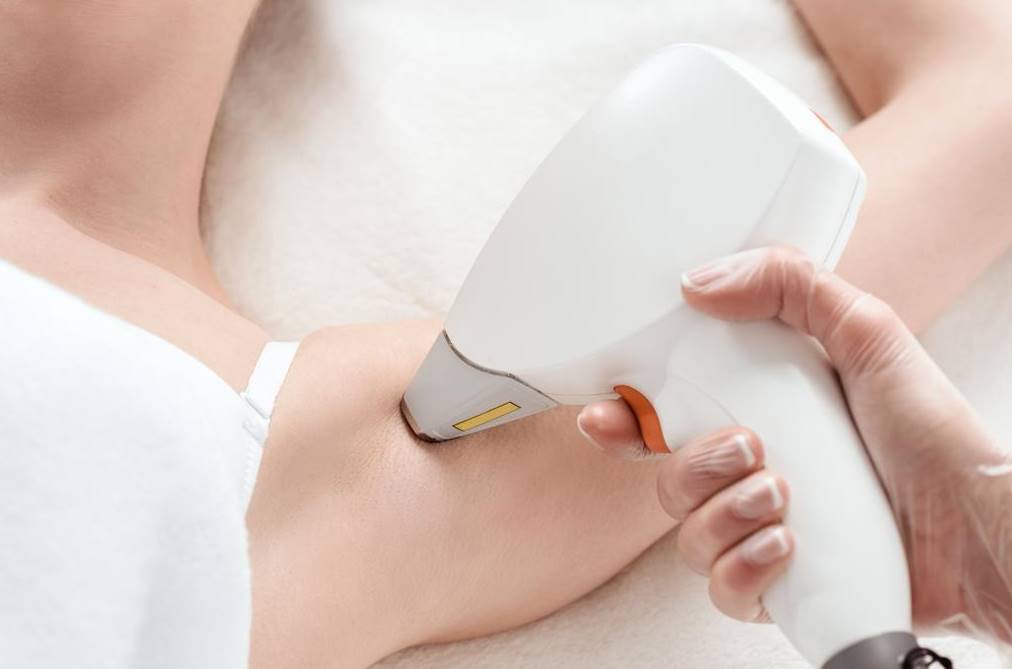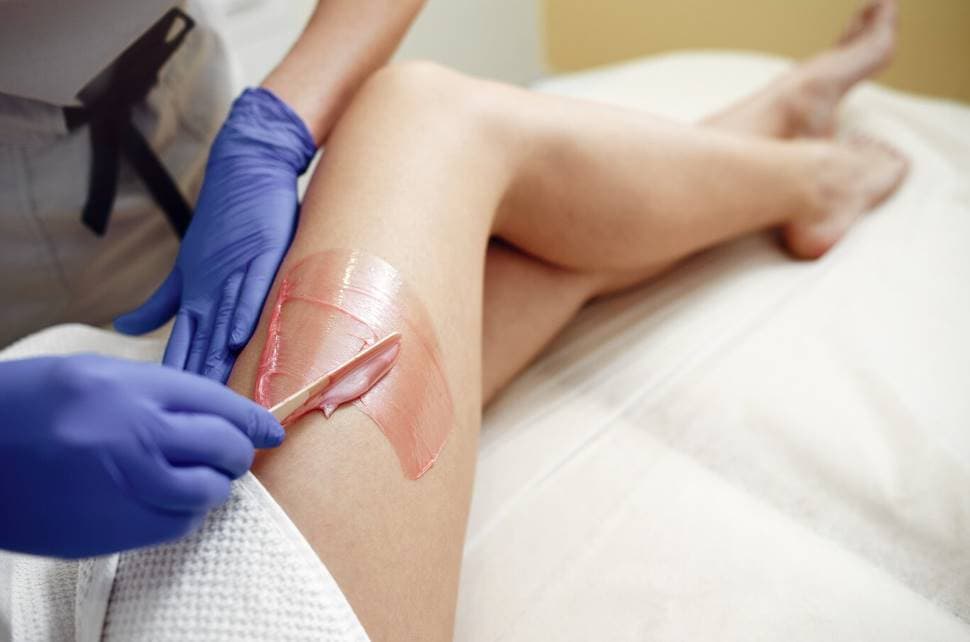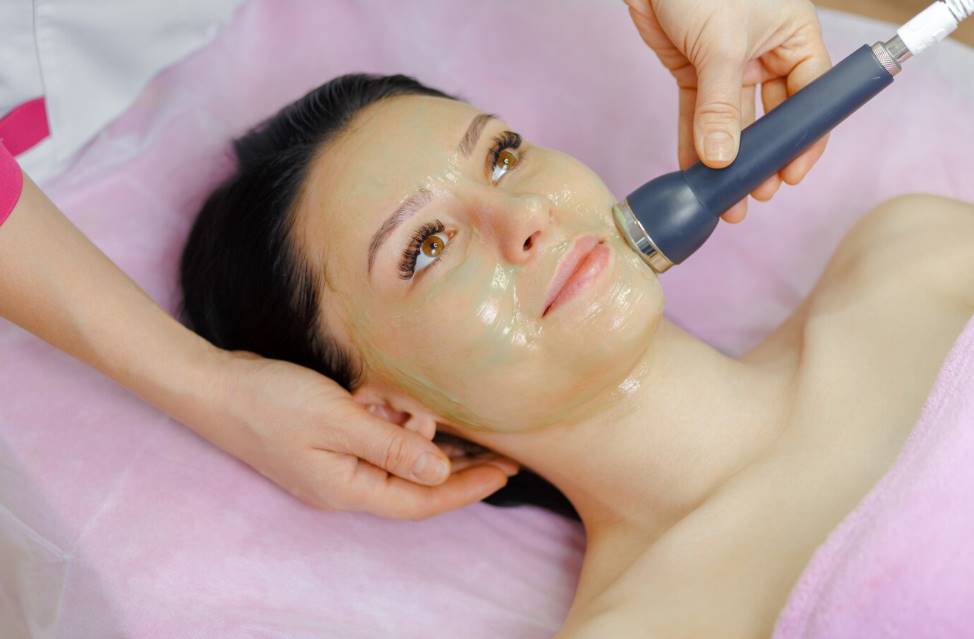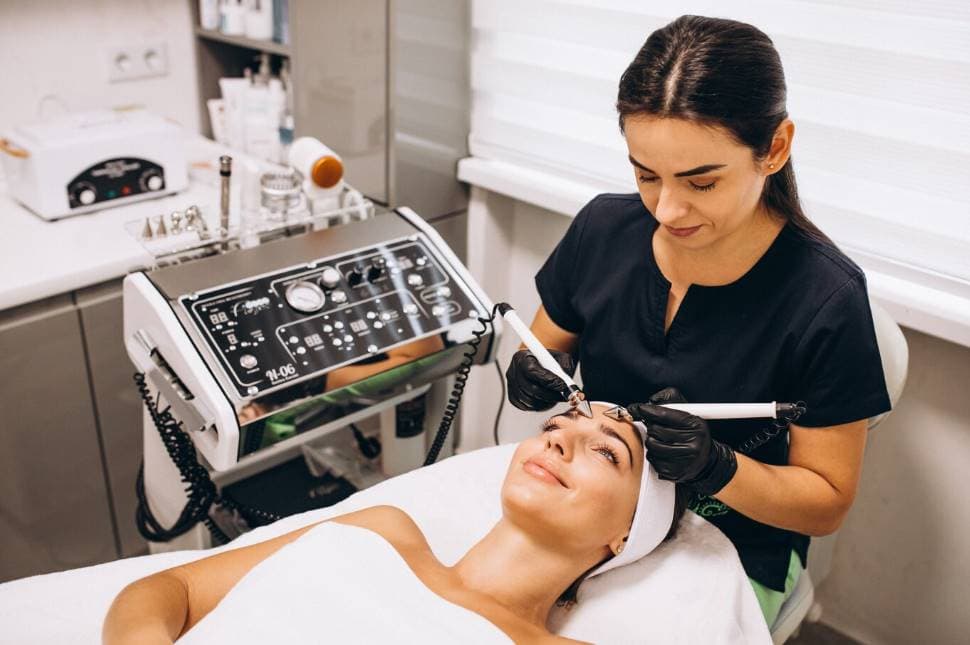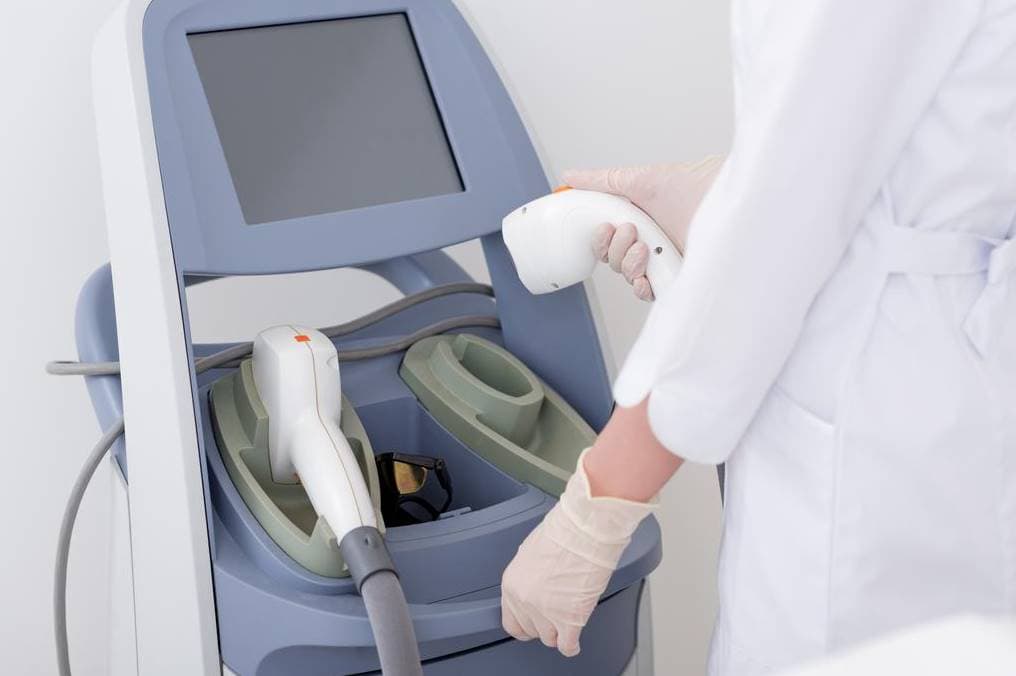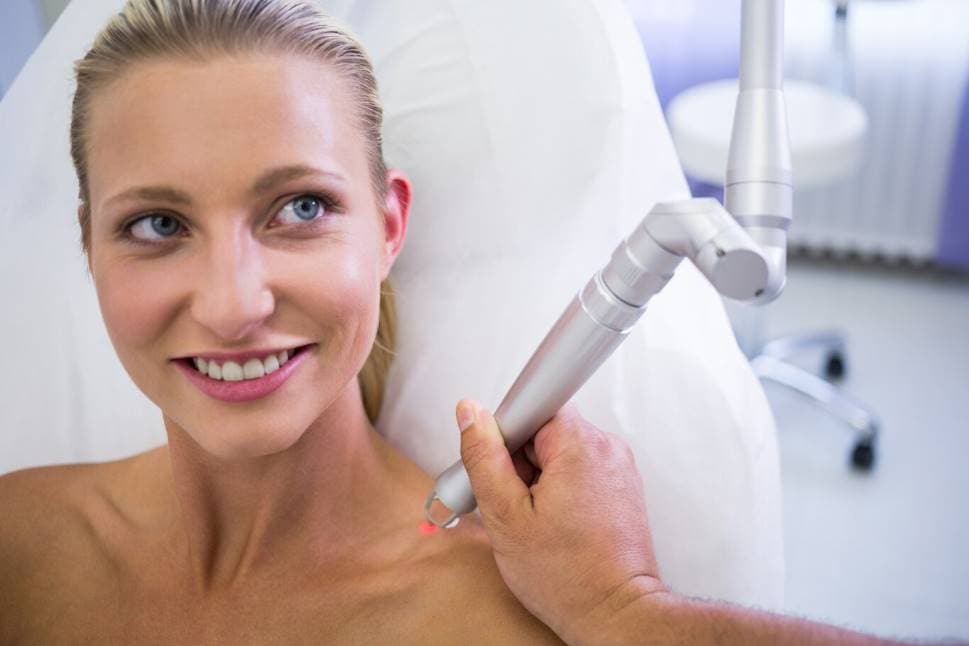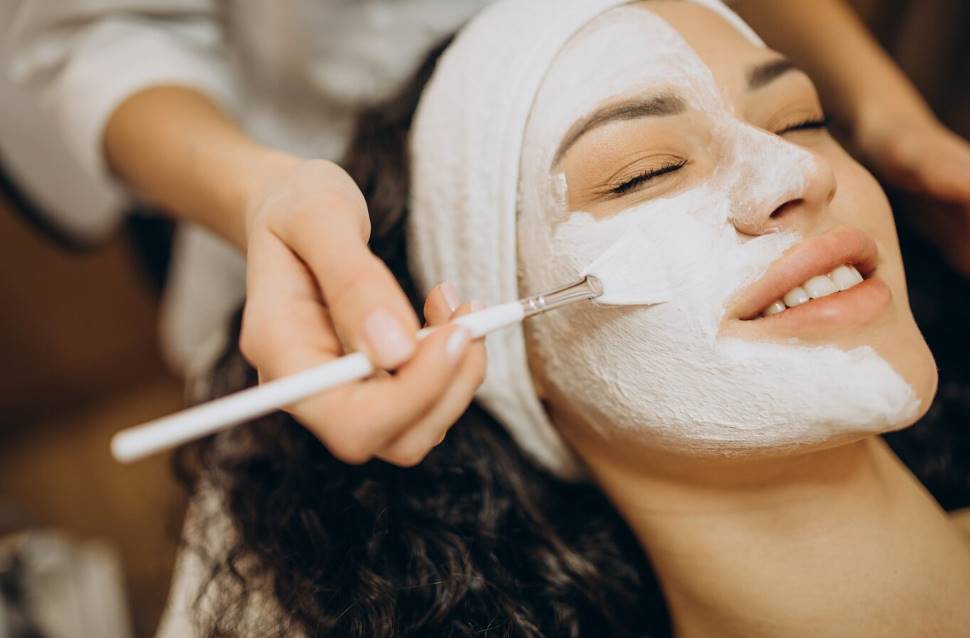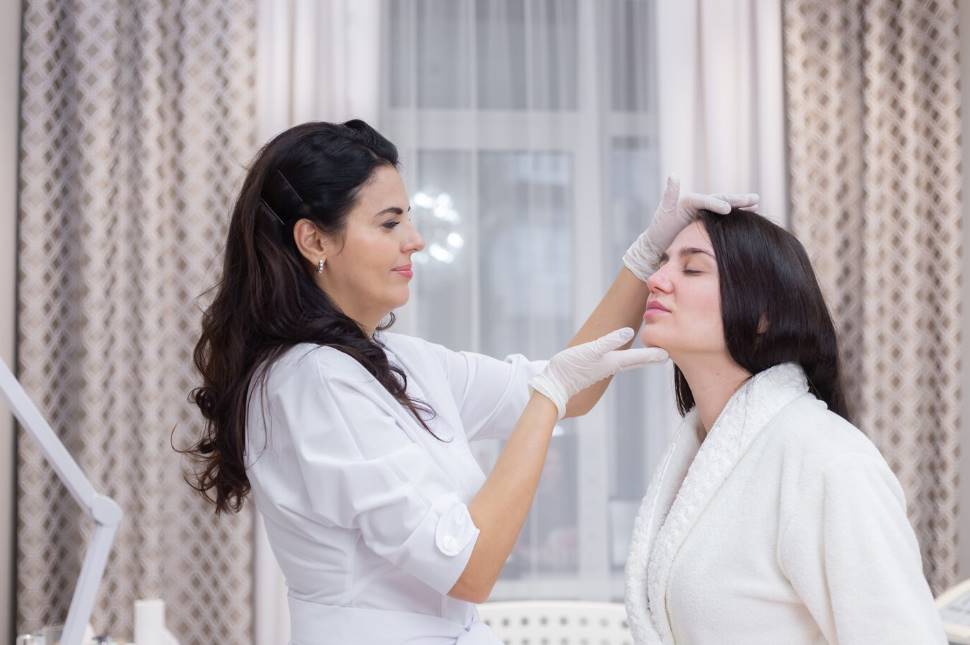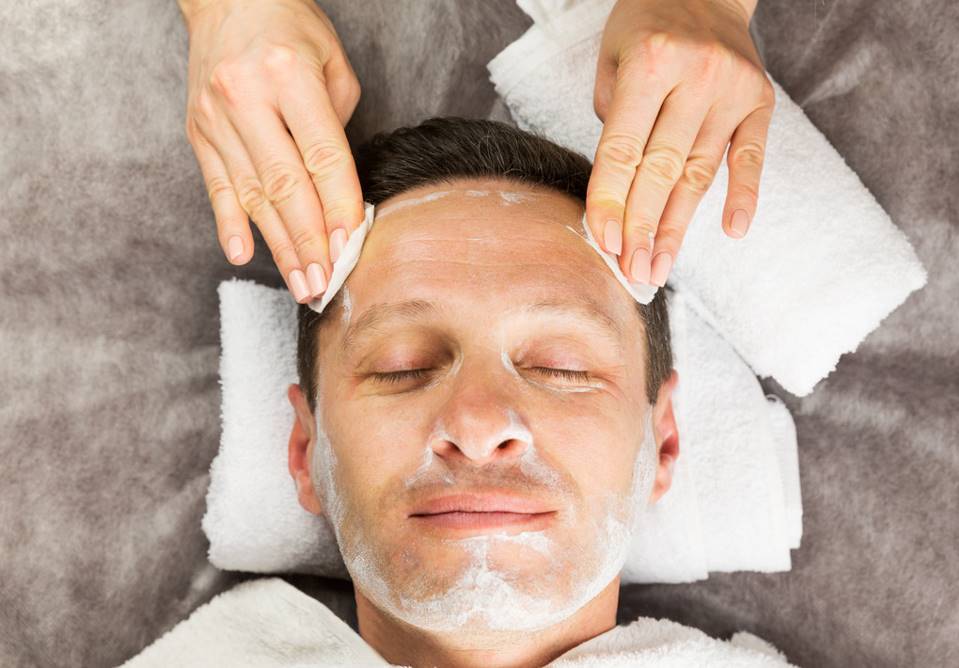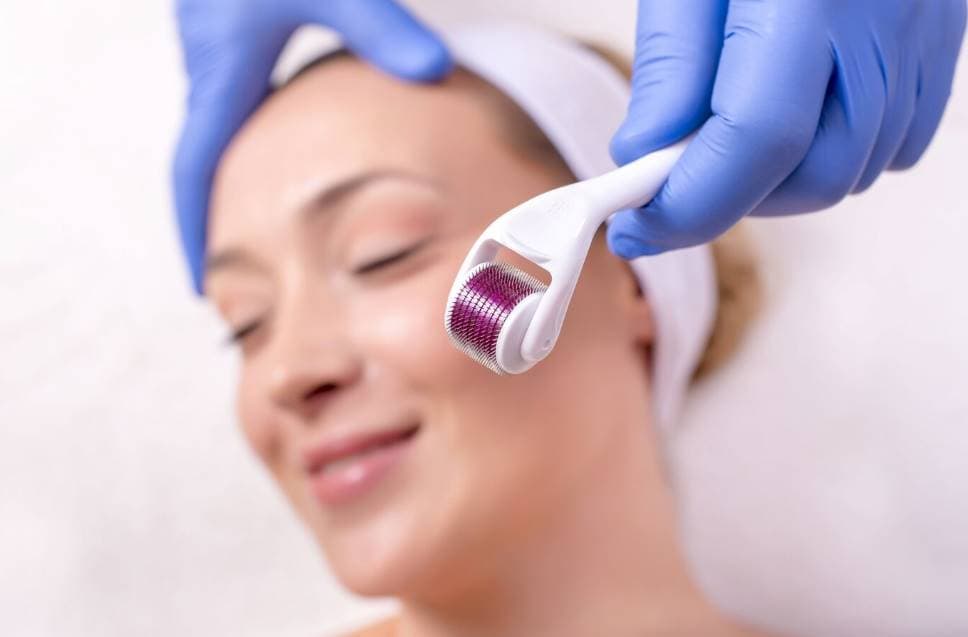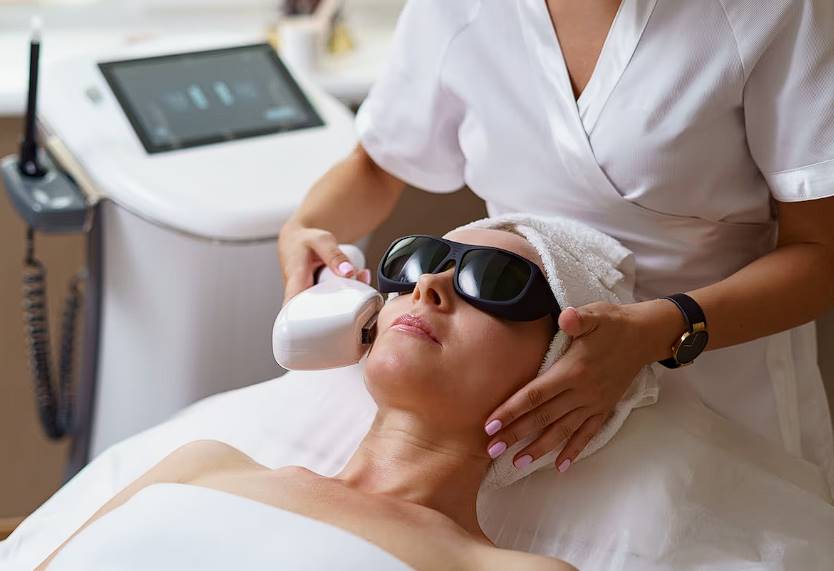Countless people have investigated cutting-edge skincare treatments in their search for glowing, youthful skin. Laser therapy is one such method that has proven to be highly effective in producing noticeable changes in skin tone and texture. Our skin's texture, which is responsible for its firmness, even tone, and overall appearance, is crucial to our physical presentation.
We'll look into the research behind laser treatments, how they work, and the many ways in which they can improve skin texture. Learn how lasers can be used for a variety of skin care purposes, including collagen stimulation, scar reduction, and wrinkle smoothing.
Definition Of Laser Therapy
Laser resurfacing is a cosmetic surgery used to address minor skin imperfections or enhance the overall appearance of the skin on the face. This can be achieved by:
Ablative Laser.
This laser treatment involves the removal of the epidermis, the skin's outermost layer, and the heating of the dermis, the skin's middle layer, to promote the production of collagen, a protein that enhances the skin's firmness and smoothness. The treated region will appear smoother and tighter as the epidermis heals and regrows. Carbon dioxide (CO2) laser, erbium laser, and combination systems are all examples of ablative therapy.
Nonablative Laser Or Light Source.
The collagen-building effects of this method are doubled. It's less invasive than an ablative laser and has a quicker healing time. However, the effects are subtler. Intense pulsed light (IPL) therapy, erbium (Er:YAG) laser treatment, and pulsed-dye laser treatment are all examples.
A fractional laser, which treats the target area by leaving microscopic columns of untreated tissue, can be used for both procedures. The goal of developing fractional lasers was to reduce downtime and adverse consequences.
Facial wrinkles can be smoothed out using laser resurfacing. As a bonus, it helps restore lost pigmentation and evens out skin tone. Excessive or drooping skin cannot be removed with laser resurfacing.
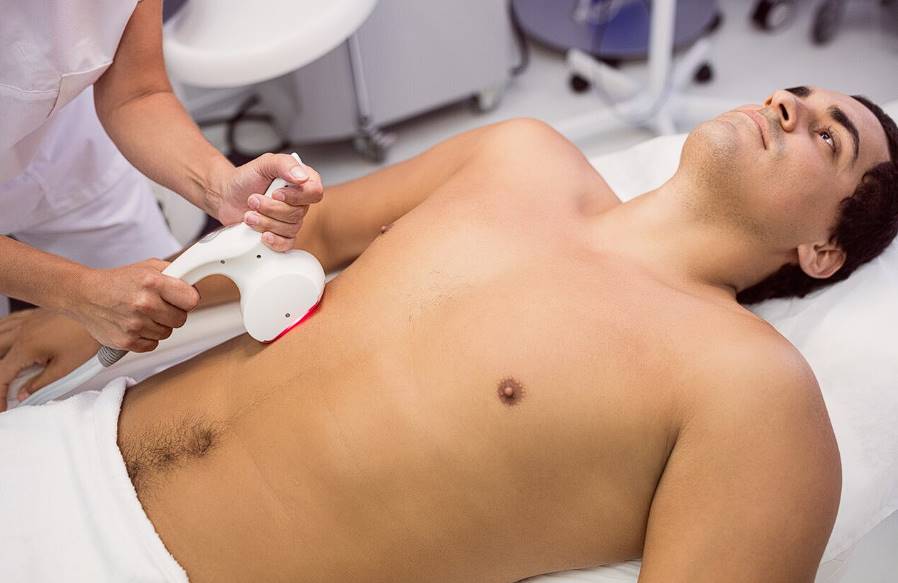
How Do Laser Treatments Make Skin Healthier?
Reducing Appearance Of Wrinkles
Wrinkles and fine lines can be diminished by laser treatments, leaving the skin looking younger and healthier. Signs of ageing include wrinkles and fine lines.
Laser resurfacing can lessen the appearance of wrinkles, including those around the eyes and mouth. In addition to a more youthful appearance, the treatment may also result in a more radiant and healthy glow to the skin.
Treating Discoloration And Spots
Even out your skin tone with laser treatments. Brown spots, redness, and other forms of skin discoloration can all be treated with this method. Age, sun exposure, and underlying skin pigmentation abnormalities are only few of the possible causes of the discolouration and patches. Freckles can be reduced or eliminated using laser treatment. The therapy results in more even or balanced skin tone.
Reducing Appearance Of Blood Vessels
Spider veins, sometimes called fractured capillaries, are conspicuous blood channels that might affect some people. Damage to the skin's texture can result from the vessels' visibility. Skin irritations, sun exposure, and even alcoholism and hormones can all lead to these unattractive lesions. Most cases of spider veins disappear after just one or two laser treatments.
Tightening The Skin Texture
Skin elasticity decreases with ageing because collagen formation slows. The skin becomes lax or saggy as a result. People's skin loses some of its youthful resilience as they become older.
By stimulating collagen production, laser therapy can help enhance skin tone. As a bonus, the therapy boosts collagen absorption in the surrounding areas, resulting in younger-looking skin. The effects are noticeable right away, and they keep getting better over time.
Improving The Appearance Of Scars
Making an effort to conceal scars with cosmetics is sometimes a frustrating and time-consuming process with unsatisfactory results. Scars are disfiguring and often irreversible marks on the skin.
Scars can have their look enhanced by laser therapy. Results from laser treatments to remove or lessen scarring are not guaranteed and will vary from patient to patient. Acne scars, surgical scars, and accident scars are all treatable with these methods.
Reducing Pore Size
Age and genetics both play a role in the development of enlarged pores. The skin becomes uneven and rough due to enlarged pores. People who always feel self-conscious due to their wide pores are not alone. After a laser treatment, the skin is often smoother and the pores less noticeable. The treatment's results are very long-lasting.
The use of lasers in medicine has come a long way in recent years. Laser treatments for the skin come in a variety of forms. Examine whether you are a candidate for laser treatment if your skin has been damaged by time or your way of life.
What Kinds of Skin Problems Can Be Fixed Using Lasers?
Laser methods can be used to treat a variety of skin problems. And it works marvels against rosacea, sun spots, broken capillaries, red spots, wrinkles, pigmentation, and the like. Since it is crucial to first determine the type of skin condition before deciding on the proper laser treatments, we have broken down the most common skin conditions that laser technologies are used to treat.
Pigmentation
Pigmentation refers to any variation in skin tone that results from the body's abnormal melanin synthesis. Excessive sun exposure, heredity, getting older, and hormones are common causes of this.
Pigmentation can be effectively treated using laser therapy. Solar lentigos (sun spots), melasma, freckles, brown birthmarks, and more severe pigmentation issues can all be treated with lasers since they are attracted to melanin (the pigment in the skin).
PiQo4, Ruby, Fraxel, and Gemini are just some of the lasers that can be used to remove unwanted pigmentation. Since the affected area typically contains more melanin than the surrounding normal skin, these lasers are able to target the pigmentation problem without harming the healthy skin. Therefore, the laser is more likely to be drawn to this trouble spot, allowing for more precise treatment with less collateral damage to healthy skin.
Vascular Conditions
Vascular diseases impact the blood vessels just below the skin's surface and are very frequent. Vascular issues that can be addressed with lasers include broken capillaries on the skin's surface (typically linked with rosacea), facial veins, and red birthmarks (Port Wine Stains).
Invasive surgery is not necessary for treating vascular problems using laser therapy. Because of their strong attraction to oxyhaemoglobin, a component of blood, these lasers can be used to successfully target and treat vascular disorders.
The Gemini laser is the workhorse of this class of devices. These lasers are particularly effective at closing off blood vessels because of their strong affinity for oxyhaemoglobin.
Tattoo Removal
Needles are used to implant ink pigments into the skin, leaving a permanent imprint known as a tattoo.
The good news is that modern laser technology allows tattoos of any colour to be erased or greatly lightened with minimal impact on the skin. Laser tattoo removal has the highest success rate in restoring the skin to its condition before the tattoo was applied, with minimal risk of scarring.
Lasers like the Piqo4 laser and the Ruby laser work well for tattoo removal because they are drawn to pigment. Both of these sources produce bursts of energy lasting only a few hundredths of a second.
These brief bursts of energy, which are transmitted as heat to the skin, are powerful enough to fracture the tattoo pigment, which the body may then flush away.
You will need multiple laser treatments to completely remove or significantly lighten your tattoo. Laser removal is an option for any tattoo, whether it was done by an amateur or an expert, and this includes cosmetic tattoos like eyeliner, eyebrow, and lip tattoos (which we do not offer at our clinic). It's worth noting that green tattoo ink is most effectively removed using the Ruby laser.
Wrinkles And Skin Texture
As we age, our skin loses its elasticity and firmness, revealing wrinkles and ridges in the skin's surface. Age, overexposure to sunlight, hormones, and a decline in natural oil production are common causes.
Ablative lasers, such the carbon dioxide laser or the erbium laser, are typically utilised for laser skin resurfacing, which is used to improve wrinkles and skin texture. Wrinkles are reduced because to the'resurfacing' effect of these machines. A thin layer of skin is evaporated and thermal energy is induced into the skin in this procedure.
The procedure results in the reorganisation and regeneration of collagen fibres, which in turn leads to the formation of new skin with reduced wrinkle depth, enhanced texture, and increased firmness. The most effective treatments need the use of ablative lasers, which results in a minimum recovery time of 1–2 weeks.
Some 'no downtime' laser treatments for wrinkles and skin texture have been developed, although their effects are typically less dramatic than those of the aforementioned ablative lasers.
Lasers, such as the Piqo laser, can be used to improve skin texture and wrinkles by increasing collagen production when used in a series of treatments. However, because they are non-ablative, they do not cause as much damage to the skin and so do not lead to as much improvement.
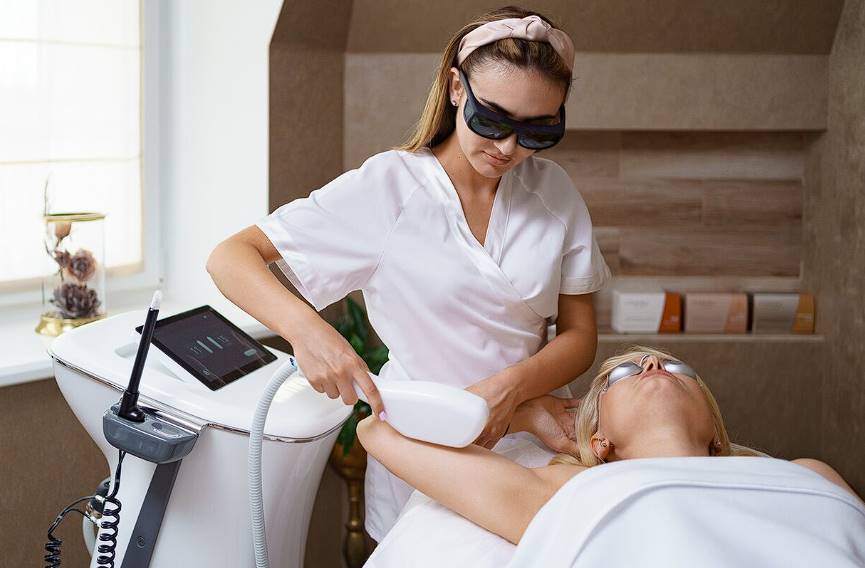
Acne Scarring
Acne scars can range from smooth and colourless to pitted and raised, and can have a lumpy patchy appearance. Scarring from acne is the result of inflammation deep under the skin, which in turn causes harm to the skin's underlying tissues, which in turn causes scarring.
The good news is that lasers are effective in reducing the appearance of acne scars. Ablative lasers, such carbon dioxide and erbium lasers, are the most efficient laser techniques.
These lasers work by encouraging the body to produce new collagen in the pitted scar tissue, which in turn helps to even out the skin's texture. Ablative laser treatments typically have a downtime of 1-2 weeks.
In addition, fraxel laser treatments can be used to lessen the appearance of acne scars. Compared to the carbon dioxide laser and the erbium laser, this treatment has a shorter recovery time. However, in most cases, the best results require a series of sessions.
Lumps And Bumps
Skin lumps and pimples might have an external or internal cause. In addition, skin tags, sebaceous hyperplasia, and seborrheic keratosis may be present. Caused by lymphoma or skin cancer, inflammatory skin, cysts, warts, subcutaneous fat, or fatty deposits.
Both the erbium laser and the carbon dioxide laser have proven to be quite effective in the treatment of these skin lesions. This method use lasers to precisely shave away layers of the lesions, eventually bringing them flush with the surface of the normal skin around them.
The 532nm wavelength of the Gemini laser is also useful for heating and ablating tissue. The melanin in the skin is what it mostly attacks, making it useful for removing darker skin lesions like seborrheic keratosis (which resemble sultanas).
While lasers may be an option, radio wave devices are more typically utilised to remove benign growths.
Acne
When oil and dead skin cells become trapped in your hair follicles, you develop acne in the form of whiteheads, blackheads, and pimples. When germs cause inflammation and infection, complications can arise. Changes in hormone levels, drugs, heredity, stress, food, and anxiety are other major contributors to acne.
'Light therapy' refers to a non-invasive procedure used to treat acne. LED phototherapy is not a laser treatment, but it is effective in treating active acne when used in conjunction with chemical peels and other acne skin care methods.
Acne-causing bacteria can be attacked by LED light treatment, which also helps to decrease sebaceous activity. When used alone, LED phototherapy has no recovery period. Combining chemical peels or other treatments for acne-prone skin may result in the need for downtime.
Conclusion
When it comes to boosting one's overall appearance, nothing beats laser therapy for enhancing the quality of one's skin. Ablative laser, nonablative laser, or light source, and fractional laser are all viable options for achieving this goal. Nonablative lasers are less invasive and don't require removing the outer layer of skin (the epidermis) to stimulate collagen formation, whereas ablative lasers do.
Laser treatments can diminish the look of fine lines and wrinkles, as well as discolouration, spots, blood vessels, loose skin, scars, and pores. Wrinkles, fine lines, spider veins, and enlarged pores can all benefit from ablative laser treatments, while collagen formation and absorption are boosted by nonablative lasers.
Laser therapy is an efficient method of treating pigmentation brought on by the sun, inheritance, aging, and hormones. Pigmentation removal lasers like the PiQo4, Ruby, Fraxel, and Gemini are popular options since they may be utilised on problem areas without hurting the surrounding skin.
In conclusion, laser therapy has been shown to be highly effective in improving skin texture and tone, with benefits including the reduction of wrinkles, the treatment of discolouration and spots, the reduction in the visibility of blood vessels, the improvement in the visibility of scars, and the shrinking in size of pores. The development of medical lasers in recent years has made them an appealing choice for people with skin damage or other lifestyle problems.
Vascular disorders, tattoo removal, wrinkles and skin texture, acne scarring, lumps and bumps, and acne are just some of the many skin issues that can be treated with laser therapy. The high affinity of lasers for oxyhaemoglobin allows them to cure vascular illnesses such as broken capillaries, facial veins, and red birthmarks. The Gemini laser has been shown effective in treating a variety of vascular conditions.
Another area where laser technology can be used to great effect with little side effects is in the removal of tattoos. Piqo4 and Ruby lasers, among others, are useful for this because they emit energy bursts that damage the tattoo ink. However, a tattoo requires numerous sessions of therapy in order to be totally erased or at least greatly faded.
Using ablative lasers, such as carbon dioxide and erbium lasers, to treat acne scars can enhance skin texture and diminish wrinkle depth by stimulating the body to manufacture new collagen fibres. The minimal time required to recuperate from ablative laser treatments is normally between two and four weeks. To reduce the visibility of acne scars, a series of Fraxel laser treatments is necessary.
Causes of lumps and bumps range from external elements like friction and frictional heat to interior causes like lymphoma, skin cancer, inflammation, cysts, warts or fatty deposits under the skin. These skin lesions respond well to treatment with either an erbium or carbon dioxide laser. To remove dark skin lesions like seborrheic keratosis, the Gemini laser's 532nm wavelength is optimised for heating and ablating tissue.
LED phototherapy and other forms of light therapy are useful adjuncts to chemical peels and other treatments for aggressive acne. When oil and dead skin cells become trapped in your hair follicles, you develop acne in the form of whiteheads, blackheads, and pimples. When germs cause inflammation and infection, complications can arise. Changes in hormone levels, heredity, drugs, food, stress, and anxiety are other major contributors to acne.
'Light therapy' refers to a non-invasive procedure used to treat acne. LED phototherapy is not a laser treatment, but it is effective in treating active acne when used in conjunction with chemical peels and other acne skin care methods.
Acne-causing bacteria can be attacked by LED light treatment, which also helps to decrease sebaceous activity. When used alone, LED phototherapy has no recovery period. Combining chemical peels or other treatments for acne-prone skin may result in the need for downtime.
Content Summary
- Laser therapy is becoming increasingly popular as an effective solution for improving skin texture and tone.
- These treatments are often used for cosmetic purposes to address minor skin imperfections.
- Ablative laser treatments remove the epidermis and heat the dermis to stimulate collagen production.
- Non-ablative laser therapy is less invasive and has quicker healing times, but its effects are more subtle.
- Fractional lasers can be used in both ablative and non-ablative treatments to reduce downtime.
- Laser resurfacing is an effective method for smoothing out facial wrinkles.
- The treatment can also restore lost pigmentation and even out skin tone.
- Laser treatments can significantly reduce the appearance of wrinkles and fine lines.
- They are particularly effective for treating wrinkles around the eyes and mouth.
- Lasers can also treat various forms of skin discoloration including brown spots and redness.
- Freckles can be effectively reduced or eliminated with laser therapy.
- Laser treatments can improve skin tone by treating pigmentation abnormalities.
- Spider veins, also known as fractured capillaries, can be treated with lasers.
- This therapy is effective in making spider veins disappear, often in just one or two sessions.
- Laser therapy can enhance skin elasticity by stimulating collagen production.
- The treatment can provide immediate effects that continue to improve over time.
- Lasers can significantly improve the appearance of scars, including acne, surgical, and accident scars.
- The therapy can lessen pore size, making the skin appear smoother.
- Enlarged pores can be effectively treated with lasers, resulting in long-lasting effects.
- Laser technology has evolved significantly over recent years, providing a range of options for skin treatment.
- Lasers can effectively treat rosacea, sun spots, broken capillaries, and red spots.
- Excessive sun exposure is a common cause of skin pigmentation that can be treated with lasers.
- Various types of lasers, such as PiQo4, Ruby, and Fraxel, can target specific pigmentation problems.
- For treating vascular conditions like facial veins and red birthmarks, the Gemini laser is commonly used.
- Tattoos of all colours can be removed or significantly lightened with modern laser technology.
- Multiple laser sessions are typically required for complete tattoo removal.
- The Ruby laser is particularly effective in removing green tattoo ink.
- Wrinkles and skin texture issues are often caused by age, sun damage, and hormone imbalances.
- Ablative lasers like carbon dioxide and erbium lasers are effective in treating wrinkles and improving skin texture.
- 'No downtime' laser treatments offer less significant results compared to ablative lasers.
- Acne scars are often the result of deep skin inflammation and can be improved with lasers.
- Ablative laser treatments for acne scars usually require a recovery period of 1-2 weeks.
- Fraxel laser treatments are also an option for treating acne scars and require less downtime.
- Laser treatments are effective in treating various skin lesions, including lumps and bumps.
- Both erbium and carbon dioxide lasers can treat skin lesions by removing fine layers.
- The Gemini laser is also effective for treating darker skin lesions like seborrheic keratosis.
- Radio wave devices are more commonly used for removing benign skin growths.
- Acne is commonly caused by blocked hair follicles, bacteria, and hormone fluctuations.
- 'Light therapy,' although not a laser treatment, is effective in treating active acne.
- LED phototherapy targets acne-causing bacteria and reduces sebaceous activity.
- Lasers can treat a wide variety of skin conditions, making it crucial to identify the specific issue before choosing a treatment.
- Non-ablative lasers like IPL therapy and pulsed-dye laser treatment offer less invasive options.
- Laser therapy can result in a more youthful appearance and a radiant, healthy glow.
- Age and genetics both play a role in the development of skin issues like enlarged pores.
- Laser treatments are not suitable for removing excessive or drooping skin.
- Collagen production slows with age, contributing to decreased skin elasticity which can be improved by lasers.
- Concealing scars with makeup can be time-consuming and frustrating, but lasers offer an alternative.
- The effects of laser treatments are often long-lasting and continue to improve with time.
- Treatment results may vary from patient to patient, and a consultation with a dermatologist is advised.
- Lasers are attracted to melanin, allowing them to target pigmentation problems without damaging the surrounding skin.
Frequently Asked Questions
Laser therapy for skin texture improvement involves the use of specialised lasers to stimulate collagen production, reduce scars, wrinkles, and correct pigmentation irregularities, ultimately leading to smoother and more youthful skin.
Laser therapy works by delivering controlled laser energy to the skin, which can either resurface the skin or stimulate collagen production. This helps in addressing various skin texture issues, such as fine lines, wrinkles, and scars.
Laser therapy can effectively address a range of skin texture concerns, including wrinkles, fine lines, acne scars, surgical scars, uneven pigmentation, age spots, and overall skin roughness.
While many modern lasers are suitable for a wide range of skin types, it's crucial to consult with a qualified dermatologist or laser specialist to determine the most appropriate treatment based on your skin type and specific concerns.
The number of sessions required varies based on the individual's skin condition and the type of laser used. In some cases, significant improvement may be achieved in just one session, while others may require a series of treatments spaced a few weeks apart.
